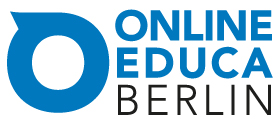 Last week, at Online Educa in Berlin, I gave a tutorial on deeper elearning as a pre-conference event. In it, I talked about getting more meaningful objectives, writing practice that actually develops meaningful outcomes, and content (concepts & examples) aligned to support effective practice. I also talked about emotional engagement and social learning, before talking about revising design processes to incorporate these deeper elements in an effective and not-too-different approach. In short, I was talking about aligning our designs, and our design processes, to how we think and learn.
Last week, at Online Educa in Berlin, I gave a tutorial on deeper elearning as a pre-conference event. In it, I talked about getting more meaningful objectives, writing practice that actually develops meaningful outcomes, and content (concepts & examples) aligned to support effective practice. I also talked about emotional engagement and social learning, before talking about revising design processes to incorporate these deeper elements in an effective and not-too-different approach. In short, I was talking about aligning our designs, and our design processes, to how we think and learn.
This is something that most organizations should be thinking about. I was pleasantly surprised that the audience included folks from universities, not-for-profits, and government agencies as well as businesses. The challenges are different in some respects, but there are shared elements. Education tends to be about long term learning relationships (typically at least a half year to several years), versus the short-term relationships (e.g. an hour to several days) in organizational learning. Yet the need to respect how our brains work is a continuum. Our brains learn in particular ways that are unaffected by the curricular needs. Learning solutions for performance and for education both still need to respect our neural and cognitive architecture.
And too little of what we do reflects what we know. As a recent commenter noted, there’s a conflict between the de-facto practices and what research says. As she also noted, our tools are also focused on supporting wrong approaches. It’s not that tools prevent doing meaningful learning, it’s just that you have to get your design right first and then make the tool conform (as opposed to the alternative). And our limitations as designers flow from the same source, our brain, as our limitations as learners. Thus we need to be as aware of cognition in our designing as in our design.
I’ll be talking about the problems this engenders in a special webinar tomorrow. There’re still a few slots left. If you’re committed to trying to improve your learning design, and you have the resources to do so, this is an opportunity to get started. There isn’t a lot of pressure yet, but it’s time to be proactive before people start asking questions about the business impact of what we’re doing. What do you think?
Leave a Reply